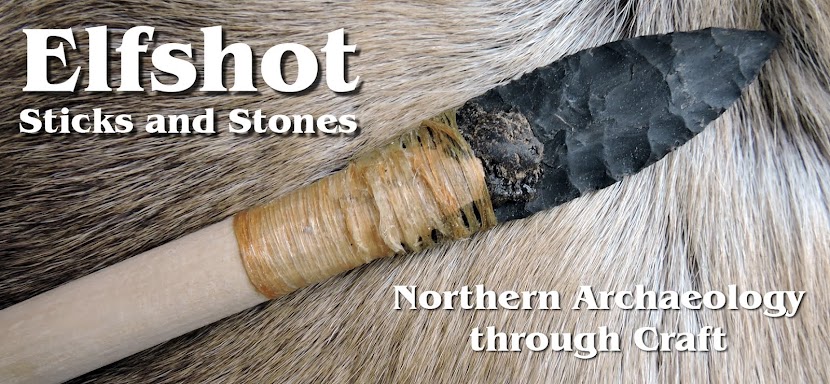 |
Touring the Archaeology vault at The Rooms,
with Lori Temple (in green) |
I've been teaching ARCH 4153 Lithic Analysis this semester at Memorial University of Newfoundland. A good part of the course was
hands-on flintknapping, especially early in the semester. In was a fun start to the course and it gave the students first hand experience with working stone. The latter half of the semester was dedicated to an analysis of lithic debitage collected from the Spearbank Site (DlBk-1) in the community of Cow Head, on Newfoundland's west coast in the mid-1970s. This is the type site for the Cow Head complex.
 |
One student's flake
sample |
This is an important site for the Province and has been periodically re-examined since Jim Tuck first excavated it 40 years ago. The most recent and systematic work was done by Latonia Hartery as part of her MA research at the University of Calgary in the early 2000s. However, there are still many, many bags and boxes of debitage that have not been touched. We tackled one crate of debitage this semester. Each student was given a sample of around 250 pieces of debitage, made up of flakes, cores, and shatter and they systematically poked, prodded, and measured two dozen attributes on every single fragment. They put in a tremendous amount of time and effort to study each piece in painstaking detail.
 |
| Sifting through the diagnostic artifacts from the Spearbank site at The Rooms |
 |
| Boxes of artifacts |
Earlier in March the class met at The Rooms during our regular class time to tour the Archaeology Lab with Lori Temple, the Archaeology/Ethnology Collections Manager. We viewed the vaults where the diagnostic artifacts from the Spearbank site are stored and the students sorted through the boxes of artifacts to find examples of diagnostic artifacts from the same levels and units that their flake samples came from. The idea was to help put the flakes and the site into context by seeing some of the tools that were being made and used at the site.
 |
Archaeology lab space at
The Rooms |
There do seem to be patterns emerging in the collection, even in these relatively small samples (the site was a quarry and the total flake count from all of the excavated material must be in the hundreds of thousands). The students are working on their final papers right now and I'm looking forward to reading all of their results, thoughts, and conclusions. I've been extremely impressed with the effort and commitment to the course from everyone in the class. We have one more fun class of flintknapping and hafting stone tools and then the semester is over. I'll certainly miss hanging out with them every week.
 |
| Arch 4153 at The Rooms |
 |
| A flake attribute analysis is a lot of work. The payoff for the students is an increased familiarity with the sort of debitage commonly found at any pre-Contact archaeological site. The benefit to the collection is a high resolution snapshot of the way lithic resources were used. The cost is time. A lot of time. |
Photo Credits:
1-3, 5-7: Tim Rast
4: Lori Temple















